My favourite artist of the month is Anselm Kiefer. A German artist who creates paintings and monumental installations with crusted surfaces, incorporating, lead, concrete, ash, acid, earth, glass and gold, broken glass, oil, emulsion, shellac, acrylic and raw materials from nature.
I particularly like Kiefer’s ambitious project of transforming an old derilict silk factory in La Ribaute France into a monumental studio art complex where he created his monumental works. He dug out underground chambers, tunnels, to create living and working spaces set amongst strange, reinforced, concrete towers and bunkers, woods and caves. There was even a crypt, an amphitheatre and underground pool.
A trailer from the movie “Over Your Cities Grass Will Grow” about Kiefer’s last days at the studio.
Robert Hughes on Anselm Kiefer
A record of an assistant’s time with Anselm Kiefer from his studio in Barjac. This was in 1999 -2000.
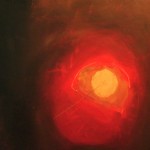
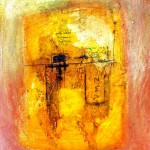
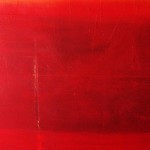
Layers layers layers. Did you know? many of my paintings, especially oil paintings, have layer upon layer of pigment and glazes. Each painting can take many hours,weeks even months to complete.
What is a Glaze?
A glaze combines two or more transparent layers of paint, which have been applied over an opaque underpainting. Each transparent layer builds on the ones under them, creating new colors and added richness depth and interest to a piece.
Rembrandt would paint in layers, building from the back of the painting to the front, by using coats of glazes. He would use at least 15 layers of transparent glazes in many of his paintings. That is why they seem to glow and emerge from the darkness of the background.
A few good sites to find out how to create glazes in your paintings
http://painting.about.com/od/oilpainting/a/glazing_FAQ.htm
http://painting.about.com/od/oilpainting/a/Glazing_Tips.htm
http://painting.about.com/od/oilpainting/a/GeraldD_glazing.htm
Back to “Free Tutorials”
Latest news!
I’ve just been featured at Artsy Shark. Thank you! Carolyn Edlund for all your hard work and for doing such a great job promoting artists and getting their work seen.
Featured Artist Jenny Davis
Artsy Shark presents Australian artist Jenny Davis. Her mixed media work uses recycled and reclaimed materials. Enjoy her portfolio and see more about Jenny here.
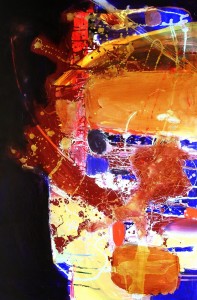 Jenny Davis is an Australian artist, working from studios in Victoria, Australia and Paris, France, where she sometimes lives. As an artist, she enjoys working in many disciplines including: painting, sculpture, photography, installation, video, collage, recycled design, sound and virtual worlds. Jenny has shown her work in many countries, including Australia, Germany, Spain, France and USA. Her work is in private and public collections across Australia, UK, Europe and the U.S.A.
Jenny Davis is an Australian artist, working from studios in Victoria, Australia and Paris, France, where she sometimes lives. As an artist, she enjoys working in many disciplines including: painting, sculpture, photography, installation, video, collage, recycled design, sound and virtual worlds. Jenny has shown her work in many countries, including Australia, Germany, Spain, France and USA. Her work is in private and public collections across Australia, UK, Europe and the U.S.A.
 Starting out primarily as an abstract painter and sculptor, Jenny’s arts practice has evolved and crosses over into many areas and disciplines. Recycling and reusing items in her work is very important. Stuff that usually goes into landfills and gleaned from the streets of Melbourne and Paris, or wherever she travels. Street litter, food packaging, advertising materials, advertising materials and all kind of paper ephemera are collected and saved for this purpose.
Starting out primarily as an abstract painter and sculptor, Jenny’s arts practice has evolved and crosses over into many areas and disciplines. Recycling and reusing items in her work is very important. Stuff that usually goes into landfills and gleaned from the streets of Melbourne and Paris, or wherever she travels. Street litter, food packaging, advertising materials, advertising materials and all kind of paper ephemera are collected and saved for this purpose.
“All this wonderful stuff I reclaim and use in my collage and sculpture.”
 “My source of creativity is spontaneous. It can mean spending days even weeks in the studio and strange places contemplating and “collecting energy”. Once I focus and sit with that energy it can take off in all areas. I then definitely need to put down a feeling or emotion, with colour, marks, words, assembled objects, or digital images still and moving. Whatever it takes to get it out! I use various techniques, materials and tools to realize my ideas.
“My source of creativity is spontaneous. It can mean spending days even weeks in the studio and strange places contemplating and “collecting energy”. Once I focus and sit with that energy it can take off in all areas. I then definitely need to put down a feeling or emotion, with colour, marks, words, assembled objects, or digital images still and moving. Whatever it takes to get it out! I use various techniques, materials and tools to realize my ideas.
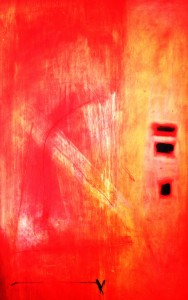 The same goes with my photography. It’s spontaneous and unrehearsed. I like to tell strange stories with my photography and will put myself in uncomfortable spaces to achieve this. I have a wonderful space I found in Paris, I call the dungeon. I can spend hours down there waiting for something to take off. “
The same goes with my photography. It’s spontaneous and unrehearsed. I like to tell strange stories with my photography and will put myself in uncomfortable spaces to achieve this. I have a wonderful space I found in Paris, I call the dungeon. I can spend hours down there waiting for something to take off. “
 At the moment, I am fascinated by the narrative we tell ourselves, when placed in unfamiliar situations. Our mind seems to fly into “spontaneous imagination” and not focus in the moment. I want to seize those imaginary stories and create something with it.
At the moment, I am fascinated by the narrative we tell ourselves, when placed in unfamiliar situations. Our mind seems to fly into “spontaneous imagination” and not focus in the moment. I want to seize those imaginary stories and create something with it.
 I love spaces underground. There’s a life underneath the earth, and people don’t know about it, but it’s very busy and living, I have taken photos of the Eiffel Tower but I go under it, and look at closer fragments. I’m inspired by many things: Creative minds, Science as art, varies art movements and artists, Ernst, Miro, Tapies, Surrealism, Dada, Abstract Expressionists’, Natural history, Psychology, de-construction , Chaos theory, collecting found- objects and street litter, graffiti, street art, books, vintage and antique, travel and more.
I love spaces underground. There’s a life underneath the earth, and people don’t know about it, but it’s very busy and living, I have taken photos of the Eiffel Tower but I go under it, and look at closer fragments. I’m inspired by many things: Creative minds, Science as art, varies art movements and artists, Ernst, Miro, Tapies, Surrealism, Dada, Abstract Expressionists’, Natural history, Psychology, de-construction , Chaos theory, collecting found- objects and street litter, graffiti, street art, books, vintage and antique, travel and more.
Thank you Tyrrell’s wine, Mirvac and Sebel Heritage
“Outlook View”
Thinking of my home when I was in Europe.
This is the digital art print created from a
section of one of my original oil paintings for a wine label
Last night I attended a cocktail evening at the Sebel Heritage in the Yarra Valley. The whole idea of the evening was to introduce exhibiting artists to the new manager to chat about the current Yarra Valley Arts exhibition displayed at the resort.What a nice surprise I had when they announced my painting “Outlook View” was the winning entry for the Tyrrell’s Wine label competition. I was so excited, especially as I’d forgotten I entered the competition.
As an artist I love the idea that my art will travel, “Nomad Art” on a wine bottle.
Why should art be only framed on a gallery wall?
Although I didn’t get paid in money for my design I couldn’t think of a better marketing tool for getting my art seen and tasted:). The exposure for my art will be extensive, especially as Tyrrell’s wine is sold widely in Australia and exported all over the world. I was also presented with the new wine label beautifully framed, a gift card from Mirvac hotels & resorts and the most beautiful bunch of flowers. In the future I may even receive a case of the wine with my artwork.
Winning the competition also got me thinking a lot about the art on a wine label…
I know, when I buy a bottle of wine, I choose it primarily for its label. If the label is dull and boring visually, I won’t buy it. I also think the design of a wine label could make or break a new wine introduced to the market.
Do you choose a wine by the label?
A list of artists who have created a Château Mouton Rothschild label. Many of the artists received no payment for the work, but were given cases of wine, including of the vintage which they have illustrated.
• 1924: Jean Carlu
• 1945: Philippe Jullian
• 1946: Jean Hugo
• 1947: Jean Cocteau
• 1948: Marie Laurencin
• 1949: André Dignimont
• 1950: Arnulf
• 1951: Marcel Vertès
• 1952: Léonor Fini
• 1953: Centenary year commemoration
• 1954: Jean Carzou
• 1955: Georges Braque
• 1956: Pavel Techelitchew
• 1957: André Masson
• 1958: Salvador Dalí
• 1959: Richard Lippold
• 1960: Jacques Villon
• 1961: Georges Mathieu
• 1962: Matta
• 1963: Bernard Dufour
• 1964: Henry Moore
• 1965: Dorothea Tanning
• 1966: Pierre Alechinsky
• 1967: César
• 1968: Bona
• 1969: Joan Miró
• 1970: Marc Chagall
• 1971: Wassily Kandinsky
• 1972: Serge Poliakoff
• 1973: Pablo Picasso (posthumous recognition – in memoriam, as he had died in Mougins in April of that year)
• 1974: Robert Motherwell
• 1975: Andy Warhol
• 1976: Pierre Soulages
• 1977: Tribute to Queen Elizabeth The Queen Mother, who stayed at the chateau in April 1977
• 1978: Jean-Paul Riopelle (2 labels)
• 1979: Hisao Domoto
• 1980: Hans Hartung
• 1981: Arman
• 1982: John Huston
• 1983: Saul Steinberg
• 1984: Agam
• 1985: Paul Delvaux
• 1986: Bernard Séjourné
• 1987: Hans Erni
• 1988: Keith Haring
• 1989: Georg Baselitz
• 1990: Francis Bacon
• 1991: Setsuko
• 1992: Per Kirkeby
• 1993: Balthus (2 labels)
• 1994: Karel Appel
• 1995: Antoni Tàpies
• 1996: Gu Gan
• 1997: Niki de Saint Phalle
• 1998: Rufino Tamayo
• 1999: Raymond Savignac
• 2000: Special gold enamel relief of the “Augsburg Ram” in the Mouton museum
• 2001: Robert Wilson
• 2002: Ilya Kabakov
• 2003: 150th Birthday Tribute
• 2004: Charles, Prince of Wales
• 2005: Giuseppe Penone
• 2006: Lucian Freud